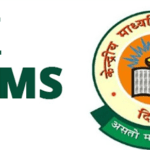Understanding NEET: A Closer Loo:
Welcome to our comprehensive advice, created especially to maximize your search engine visibility, on passing the National Eligibility and Entrance Test (NEET). Here, we offer priceless advice designed to improve your NEET preparation process. We go deeper into the intricacies of the NEET in this extensive resource, providing practical guidance and information to help you successfully navigate this crucial test.
Decoding the Eligibility Criteria:
It’s critical to determine your eligibility status in compliance with NTA criteria before starting your NEET journey. Understanding and meeting these eligibility requirements, which range from age requirements to educational requirements to citizenship requirements, is essential to setting yourself up for NEET success.
Exam Pattern Analysis:
A comprehensive understanding of the NEET exam format is essential for well-thought-out preparation. Learn the format, timeframe, and grading system so that you may make the most out of your study schedule. To optimize your score, consider how the questions are distributed among the disciplines, come up with time-management techniques, and give accuracy first priority.
Developing a Successful Preparation Method:
The key to success in the NEET is efficient preparation. Create a customized study program that includes thorough topic content, organized revision plans, and lots of practice opportunities. Use online tools, practice exams, and top-notch study materials to improve your problem-solving abilities and exam readiness.
Beyond the Exam: Getting Around in the Post-NEET Environment
Getting a competitive NEET score allows you to pursue a wide range of medical-related opportunities. Learn about the procedures that follow the exam, such as NEET counseling, seat assignment, and choosing appropriate medical colleges. Give yourself the information and tools you need to make decisions that will support your academic goals.
Accepting Difficulties, Building Resilience
The NEET journey is a demonstration of your tenacity, resolve, and steadfast commitment to your objectives in addition to serving as an assessment of your academic aptitude. As you go along your NEET journey, remember to enjoy small victories, view obstacles as chances for personal development, and adopt an attitude of constant improvement.
Crucially, NEET for the public and private sectors:
Both public and private medical schools utilize NEET results to determine admissions. For prospective medical students, it is essential since it establishes their eligibility to pursue undergraduate medical programs in India.
Concept for a pre-med exam:
In India, the concept of a standardized medical entrance exam dates back several years before the NEET. The Medical Council of India (MCI) launched the initial steps toward a national medical entrance examination in 1984. The idea of a national entrance exam for medical school admission was put out by the MCI.The Central Board of Secondary Education (CBSE) created the All India Pre Medical Test (AIPMT) in 1988 as a result of this endeavor in order to admit students to undergraduate medical programs in India.
Why NEET is used in stead of AIPMT:
The National Eligibility and Entrance Test (NEET) was chosen to replace the All India Pre Medical Test (AIPMT) in order to standardize the medical entrance examination procedure and address a number of systemic problems.
The government chose NEET over AIPMT for the following reasons:
- Uniformity: Previous to NEET, several medical admission tests were administered by various states and organizations, resulting in differences in test formats, degrees of difficulty, and assessment standards. The goal of NEET was to create a single, standard admission exam for all aspiring medical professionals in the nation.
- Elimination of Multiple Exams: AIPMT, state CETs, and other institute-specific exams were among the multiple exams that students were required to appear for. By offering a single platform for admissions to all medical colleges in the nation, NEET sought to lessen the load on students.
- Minimizing Corruption and Malpractice: During the admissions process, there were occurrences of corruption and malpractice due to the various exams. By centralizing the examination procedure under the direction of a single authority, NEET sought to reduce these types of malpractices.
- Resolving Disparities: There were variations in the educational requirements and professional standards of medical practitioners among the states due to differing admissions criteria. NEET sought to level the playing field for every student, regardless of state or prior schooling.
- Quality Assurance: NEET sought to guarantee admission to students who met a specific standard of proficiency in the courses needed for medical studies, potentially raising the standard of medical
- BRICS

- Buddhism : the prominent religion in the world

- Cracking the Code: Your Ultimate Guide to JEE Success

Advantages of NEET:
Several advantages have been noted since NEET’s inception, including:
- Standardization: Regardless of a candidate’s state or educational background, the NEET has standardized the medical admission exam process nationwide, guaranteeing that all candidates are assessed using the same standards.
- Lessened Burden: By doing away with the requirement for students to study for several entrance tests, NEET has lessened the load on students. In the past, students had to balance multiple exams, which led to stress and financial hardship.
- Fairness: By ensuring impartiality and openness throughout the admissions process, the single entry exam approach lowers the likelihood of bias, corruption, or malpractice.
- Quality Improvement: NEET seeks to raise the bar for medical education and healthcare professionals in the nation by limiting admission to medical colleges to only the most deserving applicants.
- Greater Access: NEET has made it possible for students to compete for spots in esteemed medical colleges across the nation, regardless of where they live.
- Admissions Process Streamlining: The admissions process has been made more efficient and less bureaucratic by NEET. In terms of medical admissions, students now have a more defined route to take.
- Regulation: By creating a unified national examination system under the direction of a central body, NEET has made it easier to regulate medical education by preserving quality standards.
International Recognition: Since NEET is in line with the global norm of standardized medical entrance tests, it has enhanced the recognition of Indian medical education internationally.
Cons following NEET:
Despite the fact that NEET has significantly improved India’s medical education system, there have been certain difficulties and complaints as well.
- Regional Disparities: According to some, kids from rural or economically poor areas who may not have access to high-quality tutoring or resources to help them study for a single, important exam are at a disadvantage when they enroll in NEET programs.
- Language Barrier: Students from non-English or non-Hindi speaking backgrounds may be at a disadvantage because NEET is largely administered in these two languages. Despite efforts to offer options in regional languages, their availability is restricted.
- Stress and pressure: Students may experience elevated stress and pressure as a result of the focus on a single entrance exam, which frequently results in mental health problems including anxiety and depression.
- High Competition: Due to the increased competition for medical seats brought about by NEET, it is now even harder for students to get admitted, particularly in government colleges where space is scarce.
- Curriculum Disparity: There may be a discrepancy between what is taught in schools and what is tested on the NEET exam if it does not fully agree with the curriculum that some state boards follow.
- Coaching Industry: With numerous coaching institutes demanding outrageous prices, the NEET coaching industry has flourished. Concerns over affordability and accessibility for students from low-income families have been raised by this.
- Brain Drain: According to some detractors, NEET incentivizes students to seek medical school overseas because there are insufficient seats and fierce competition in India, which could result in the loss of gifted students.
- Pressure on Health Infrastructure: There is pressure on the current health infrastructure to handle the huge number of students aspiring to medical education for clinical training, which creates difficulties in offering high-quality practical exposure.




